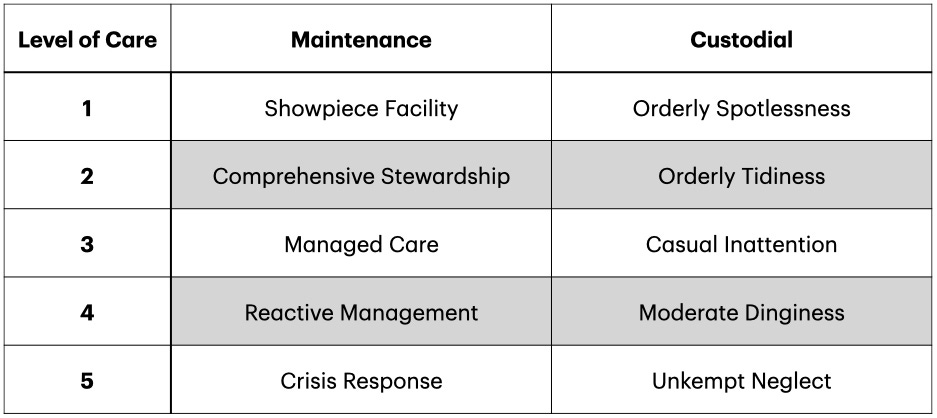Standards of care
That shiny new arts facility is full of promise and potential, but also rife with unexpected and unrelenting expense.
There is a kind of love called maintenance
Which stores the WD40 and knows when to use it
–U.A. Fanthorpe, from “Atlas”
New cultural facilities (theaters, museums, music venues, studios, learning centers, and the like) are often built on the promise of new opportunities – greater capacity to make and share creative work, more resources from major donors, better opportunities for earned income from enthusiastic crowds, boosted civic pride and civic investment. But often those opportunities are flummoxed by unexpected expense.
When the construction crews pack up and the opening-gala confetti is swept away, arts managers often find themselves in a building they can’t afford to operate (let alone program).
There are many reasons for this unpleasant surprise. Among them are the full focus and consuming effort required to get the facility built in the first place; the challenge of predicting heating/cooling/security costs for a building that doesn’t yet exist; and a management team that’s only known an old venue or hasn’t run a venue at all.
Two of the sneakiest expenses awaiting a new facility’s team are maintenance and custodial/cleaning. A novice will assume that a brand new building needs less maintenance (all the systems are new!) and that cleaning will be comparable to the old venue. But that’s ignoring the one-two punch of square footage and standards of care.
New venues are generally bigger than what they’re replacing. So even if your cost-per-square-foot to clean and maintain the building stayed the same, the multiplier would rise. And, of course, the cost-per-square-foot won’t stay the same because the standards of care will necessarily change.
“Standards of care” (aka “levels of service”) describe the expected and experienced condition of a facility – how well its systems and structures are maintained and how clean it appears to be. The levels offer both a target for shared expectations and a set of evaluation criteria for gauging actual outcomes.
As one example, the facilities management association APPA (formerly the Association of Physical Plant Administrators) offers a five-level rubric for maintanance, cleaning, and grounds to help build clarity and accountability across management teams. Each level describes visual indicators as well as operational metrics of response time, frequency of service (how often trash is emptied or surfaces cleaned), and proportion of premptive vs. corrective maintenance.

If your team is coming from an older, well-worn facility, “managed care” and “casual inattention” may have felt appropriate since it was already run down. But in a shiny, sparkly, glass-and-marble facility, that same level of care would be jarring (and disappointing) to visitors – like that first scratch or blotch on a brand new car.
As you can imagine, the operational cost of each level of service is quite different. APPA estimates that “showpiece facility” maintenance standards required an annual budget of 4 percent or more of current replacement value (CRV). “Reactive management” requires about 2.5 to 3 percent of current replacement value.
So, if you’re moving from a seasoned venue ($2 million CRV) with reactive maintenance to a new venue ($20 million CRV) with proactive maintenance, your annual costs for maintenance alone could rise from $50,000 to $800,000. Surprise!
Of course, there are ways to reduce the sticker shock. Thoughtful and proactive work among design architects, construction teams, cost specialists, and experienced facilities professionals can plan for and mitigate operating expenses. Segmenting the facility into different standards of care can moderate total expense (“showpiece facility” for audience-facing spaces, “comprehensive stewardship” for support spaces, for example). Also, benchmarking comparable facilities can bracket the budget projections with actual data – there are robust operational benchmarking resources for performing arts centers (AMS Performance Analytics) and museums (Facility Issues), for example.
But the core challenge is to remember that the grand opening of a new arts facility is not the finish line, it’s the starting line. You’ll need clear eyes, sober assessments, robust training, and lots of carbs (aka cash) when the race actually begins. Standards of care can help calibrate that work.
From the ArtsManaged Field Guide
Function of the Week: Spaces & Systems
Spaces & Systems involves selecting, securing, stewarding, and harnessing the built environment and technological infrastructure.
Framework of the Week: The Iron Triangle
The Iron Triangle describes the dynamic relationship within any complex nonprofit endeavor between its mission and program, its organizational capacity, and its capital structure.
Photo by Acton Crawford on Unsplash
Sources
APPA, Body of Knowledge
Smeds, Chris, “Metrics, Informatics & Performance,” University of Virginia, 2019

